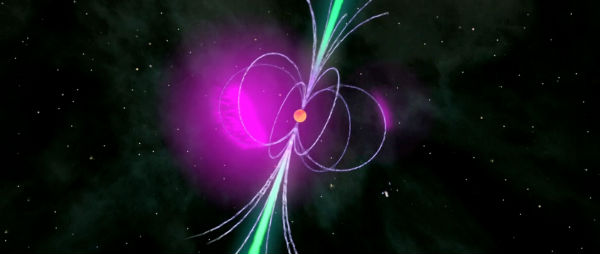The Quantum Guide – Pulsars

A pulsar is a neutron star that emits beams of radiation that sweep through Earth’s line of sight. Like a black hole, it is an endpoint to stellar evolution. The “pulses” of high-energy radiation we see from a pulsar are due to a misalignment of the neutron star’s rotation axis and its magnetic axis. Pulsars seem to pulse from our perspective because the rotation of the neutron star causes the beam of radiation generated within the magnetic field to sweep in and out of our line of sight with a regular period, somewhat like the beam of light from a lighthouse. The stream of light is, in reality, continuous, but to a distant observer, it seems to wink on and off at regular intervals. (Find out more here, here and here!)
The Fermi Gamma-ray Space Telescope
NASA – Fermi: Exploring the Extreme Universe
Gamma–ray Bursts Realtime Sky Map in Silverlight
Pulsar animation
Credit: SpaceRip
Featured image credit: NASA/Fermi/Cruz de Wilde

Commenting rules and guidelines
We value the thoughts and opinions of our readers and welcome healthy discussions on our website. In order to maintain a respectful and positive community, we ask that all commenters follow these rules.